Given is a ratio for resistors, e.g. two resistors \$\frac{R_1}{R_2}\$ = "some odd value", like 257:42.
How do I find matching resistor pairs (triples, ...) from E series, without having to try them out one by one?
When I search for the title, I merely find tools, which calculate R2 if the ratio as well as R1 are given.
However, I want a way which gives me matching resistor values given only the ratio. I did not find any list/table with all ratios or a calculator tool online.
Finding the magnitude is answered here. Another answer talks about "Sallen Key", which seems to be more complicated than my task.
What am I trying to achieve?
I need a certain gain in my measuring chain. When designing the op-amp circuit, I calculated a certain ratio which is needed for the resistors. Only some standard E series ones are available at the moment.
